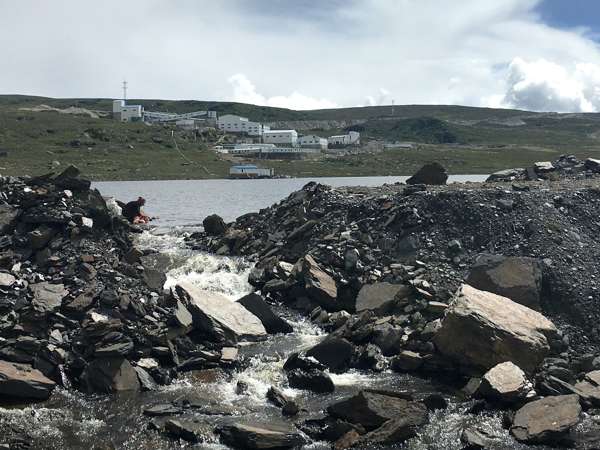
New | Under Tesla’s bonnet lies the cause of lithium’s price surge
The price of lithium has risen almost threefold in two years, but the surge won’t disrupt demand, as the cost accounts for less than 5 per cent of the cost of a lithium-ion battery, said Galaxy Resources.
The price of lithium carbonate has jumped almost threefold in the past two years, amid surging demand for the key component to make lithium-ion batteries for powering electric cars and electronic gadgets.
Still, the surging cost won’t derail demand for them, because lithium carbonate, the majority of which is produced from ores mined in Australia and South America, only accounts for less than 5 per cent of the cost of a car battery, said a major lithium miner.
“While the price of lithium carbonate has risen from US$6,000 a tonne in early 2015 to around US$15,000 currently, the incremental cost impact of the lithium inside a Tesla car has only been a little over US$600, for a car with a selling price of over US$100,000,” Galaxy Resources managing director Anthony Tse said in an interview with the South China Morning Post.

The Australia-listed firm, once the world’s fourth-largest producer of lithium carbonate, reopened a mine in Australia in 2016 after years of closure.
It was helped by surging demand by electric vehicles, and to a smaller extent, from electronic gadgets whose demand for lithium is much smaller on a per unit basis.
“The capacity of a 24 kWh battery Nissan Leaf electric car is equivalent to that of 1,000 iPads combined,” Tse said.
Galaxy, which tried to float shares in Hong Kong in 2011 but withdrew the plan citing poor market conditions, has returned to net cash position after completing a A$61 million (US$46 million) shares sale recently.
At one point a few years ago, it “almost ran out of money” after raking up big debts and huge losses due to poor management at a processing factory in China that it has since sold, Tse said.
Its shares surged more than fourfold last year, making it one of the best-performing stocks on the Australian stock exchange. It traded as high as A$0.67 before falling back to A$0.425 on Thursday.
The 2017 lithium concentrate production target of Galaxy’s Mount Cattlin mine is 160,000 tonnes, of which 120,000 tonnes have been sold under contract at US$830 to $905 a tonne depending on the ore content.
The company is targeting to make a cash cost profit margin of US$400 a tonne this year after production is ramped up, Tse said.
It’s expected to turn in a net profit in the 12 months to December 31 this year after years of losses, assuming the output and sales volume, ore content and metal recovery rate reach its targets, he added. Some 88 per cent of the world’s capacity for processing lithium salt into higher-value products are located in Asia, and China makes over half of global lithium cathodes in batteries.
Australia is the world’s largest miner of lithium ore, accounting for 41 per cent of the world’s 35,000 tonnes mine output last year, although the second largest miner Chile has just over half the world’s reserves, according to science agency United States Geological Survey (USGS).
Global consumption surged 13.5 per cent last year from 2015 to 37,800 tonnes, with batteries accounting for 39 per cent of end usage, followed by 30 per cent in ceramics and glass.
Spot market lithium carbonate prices in China have rocketed by as much as fourfold at one point in the past two years due to “an acute but likely temporary shortage” of imported lithium concentrate from Australia, USGS said.

The shortage stems from a lagged response on the supply side due to a lack of financing for the pipeline of development projects, according to Tse.
It is estimated that over US$1 billion is still required to be invested today in order to bring online sufficient supply to meet anticipated demand by 2020, he noted.
It takes 12 to 18 months to construct a hard rock lithium mining project, and another 12 months to ramp up production to the designed rate.
For lithium salt derived from salt lakes, the construction time could be longer at 24 to 30 months, Tse said.
Galaxy is conducting a feasibility study to develop a mine and possibly also build a downstream products plant in Quebec, Canada to supply North America and Europe. The study is expected to be finished in the year’s second half.
It also has a salt lake lithium mining project in Argentina, which may come on stream in 2020 if financing is obtained.
According to Japan’s Yano Research Institute’s estimate in October last year, the global automotive lithium-ion batteries market is projected to surge to 155.4 gigawatt-hour (GWh) by 2020 from 27.9 Gwh in 2015.
Tesla is building a lithium-ion battery plant in Nevada state capable of producing up to half a million lithium-ion vehicle batteries per year.
The plant, jointly developed with partners including Japanese electronics giant Panasonic, broke ground almost two years ago, and is expected to come on stream late this year.
It is expected to reach full capacity in making finished battery packs directly from raw materials by 2018, with output projected to exceed the world’s total output in 2013.
This article has been amended to replace “lithium concentrate” with “lithium carbonate” in the quote in the third paragraph.

